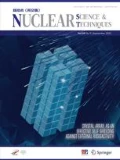Abstract
Lorentz force velocimetry (LFV) is a noncontact technique for measuring electrically conducting fluids based on the principle of electromagnetic induction. This work aims to answer the open and essential question of whether LFV can work properly under a surrounding external magnetic field (ExMF). Two types of ExMFs with different magnetic intensities were examined: a magnetic field with a typical order of 0.4 T generated by a permanent magnet (PM) and another generated by an electromagnet (EM) on the order of 2 T. Two forces, including the magnetostatic force between the ExMF and PM in the LFV, and the Lorentz force generated by the PM in LFV were measured and analyzed in the experiment. In addition, ExMFs of varying strengths were added to the LFV, and the location of the LFV device in the iron cores of the EM was considered. The experimental outcomes demonstrate that it is possible for a LFV device to operate normally under a moderate ExMF. However, the magnetostatic force will account for a high proportion of the measured force, thus inhibiting the normal LFV operation, if the ExMF is too high.







Similar content being viewed by others
References
J.A. Shercliff, The theory of electromagnetic flow-measurement (Cambridge University Press, Cambridge, 1962)
J.A. Shercliff, U. K. Patent GB 831,226, 23 Mar 1960
R.P. Uhlig, M. Zec, H. Brauer, A. Thess, Lorentz force Eddy current testing: a prototype model. J. Nondestruct. Eval. 31, 357–372 (2012). https://doi.org/10.1007/s10921-012-0147-7
J. Priede, D. Buchenau, G. Gerbeth, Force-free and contactless sensor for electromagnetic flowrate measurements. Magnetohydrodynamics 45, 451–458 (2009)
A. Thess, E.V. Votyakov, Y. Kolesnikov, Lorentz force velocimetry. Phys. Rev. Lett. 96, 4 (2006). https://doi.org/10.1103/PhysRevLett.96.164501
A. Thess, E. Votyakov, B. Knaepen, O. Zikanov, Theory of the Lorentz force flowmeter. New J. Phys. 9, 299 (2007)
X. Wang, R. Klein, Y. Kolesnikov, A. Thess, Application of Lorentz force velocimetry to open channel flow. Light Metals Tech. V 690, 99–102 (2011). https://doi.org/10.4028/www.scientific.net/MSF.690.99
V. Minchenya, C. Karcher, Y. Kolesnikov, A. Thess, Tms, Lorentz force flowmeter in industrial application. Magnetohydrodynamics 45, 459–466 (2009)
Y. Kolesnikov, C. Karcher, A. Thess, Lorentz force flowmeter for liquid aluminum: laboratory experiments and plant tests. Metall. Mater. Trans. B 42, 441–450 (2011). https://doi.org/10.1007/s11663-011-9477-6
G. Janeschitz, Plasma–wall interaction issues in ITER. J. Nucl. Mater. 290, 1–11 (2001). https://doi.org/10.1016/S0022-3115(00)00623-1
G. Kalinin, V. Barabash, A. Cardella et al., Assessment and selection of materials for ITER in-vessel components. J. Nucl. Mater. 283, 10–19 (2000). https://doi.org/10.1016/S0022-3115(00)00305-6
J. Roth, E. Tsitrone, A. Loarte et al., Recent analysis of key plasma wall interactions issues for ITER. J. Nucl. Mater. S390–S391, 1–9 (2009). https://doi.org/10.1016/j.jnucmat.2009.01.037
K. Ikeda, Progress in the ITER physics basis—preface. Nucl. Fusion 47, 1–24 (2007)
R. Hemsworth, H. Decamps, J. Graceffa et al., Status of the ITER heating neutral beam system. Nucl. Fusion 49, 045006 (2009). https://doi.org/10.1088/0029-5515/49/4/045006
Q. Wang, Practical Design of Magnetostatic Structure Using Numerical Simulation (Wiley, Singapore, 2013)
S.D. Likhite, C. Radhakrishnamurty, P.W. Sahasrabudhe, Alternating current electromagnet hysteresis loop tracer for minerals and rocks. Rev. Sci. Instrum. 36(11), 1558–1560 (1965). https://doi.org/10.1063/1.1719392
Acknowledgements
The authors give their special thanks to Dr. André Thess for useful discussions.
Author information
Authors and Affiliations
Corresponding author
Additional information
This work was supported by the National Natural Science Foundation of China (No. 51374190) and the Major Equipment Fund of Chinese Academy of Sciences (No. YZ201567).
Rights and permissions
About this article
Cite this article
Tan, YQ., Liu, RC., Dai, SJ. et al. Preliminary experimental study on applicability of Lorentz force velocimetry in an external magnetic field. NUCL SCI TECH 29, 80 (2018). https://doi.org/10.1007/s41365-018-0426-9
Received:
Revised:
Accepted:
Published:
DOI: https://doi.org/10.1007/s41365-018-0426-9




